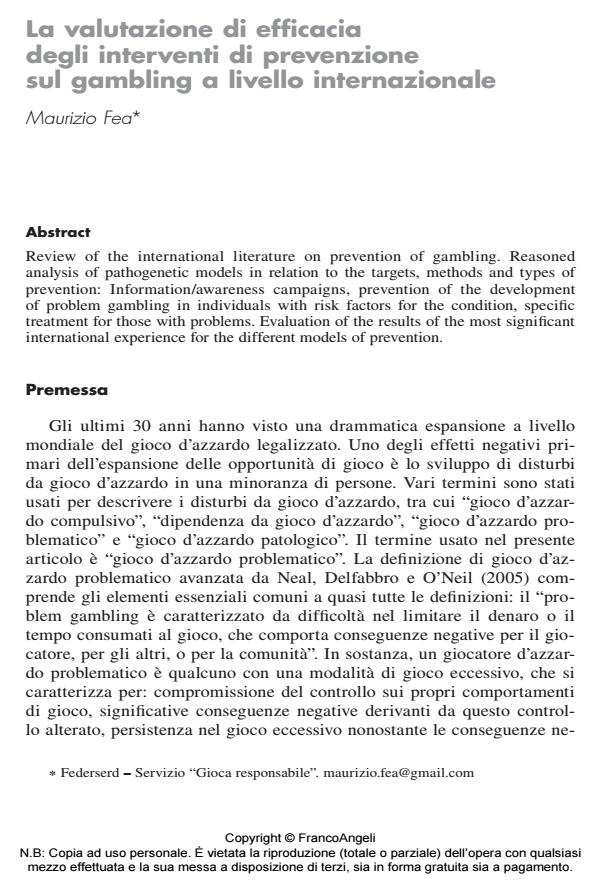La valutazione di efficacia degli interventi di prevenzione sul gambling a livello internazionale
Titolo Rivista SICUREZZA E SCIENZE SOCIALI
Autori/Curatori Maurizio Fea
Anno di pubblicazione 2014 Fascicolo 2014/3
Lingua Italiano Numero pagine 20 P. 182-201 Dimensione file 151 KB
DOI 10.3280/SISS2014-003014
Il DOI è il codice a barre della proprietà intellettuale: per saperne di più
clicca qui
Qui sotto puoi vedere in anteprima la prima pagina di questo articolo.
Se questo articolo ti interessa, lo puoi acquistare (e scaricare in formato pdf) seguendo le facili indicazioni per acquistare il download credit. Acquista Download Credits per scaricare questo Articolo in formato PDF

FrancoAngeli è membro della Publishers International Linking Association, Inc (PILA)associazione indipendente e non profit per facilitare (attraverso i servizi tecnologici implementati da CrossRef.org) l’accesso degli studiosi ai contenuti digitali nelle pubblicazioni professionali e scientifiche
Review of the international literature on prevention of gambling. Reasoned analysis of pathogenetic models in relation to the targets, methods and types of prevention: Information/awareness campaigns, prevention of the development of problem gambling in individuals with risk factors for the condition, specific treatment for those with problems. Evaluation of the results of the most significant international experience for the different models of prevention.
- IN ALTA QUOTA CON IL DIABETE TIPO 1 Aldo Maldonato, in il Diabete /2018
DOI: 10.30682/ildia1804a
Maurizio Fea, La valutazione di efficacia degli interventi di prevenzione sul gambling a livello internazionale in "SICUREZZA E SCIENZE SOCIALI" 3/2014, pp 182-201, DOI: 10.3280/SISS2014-003014